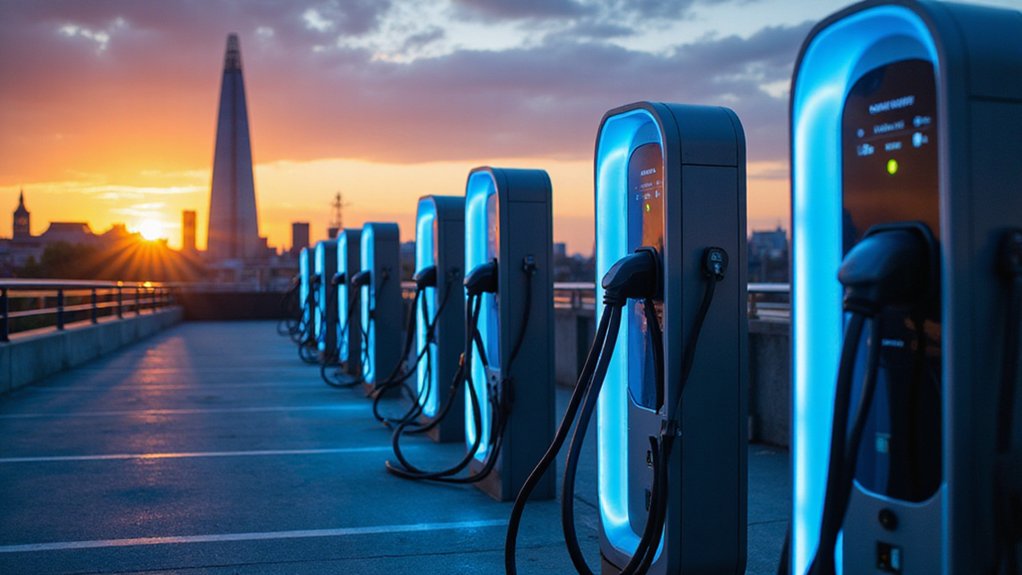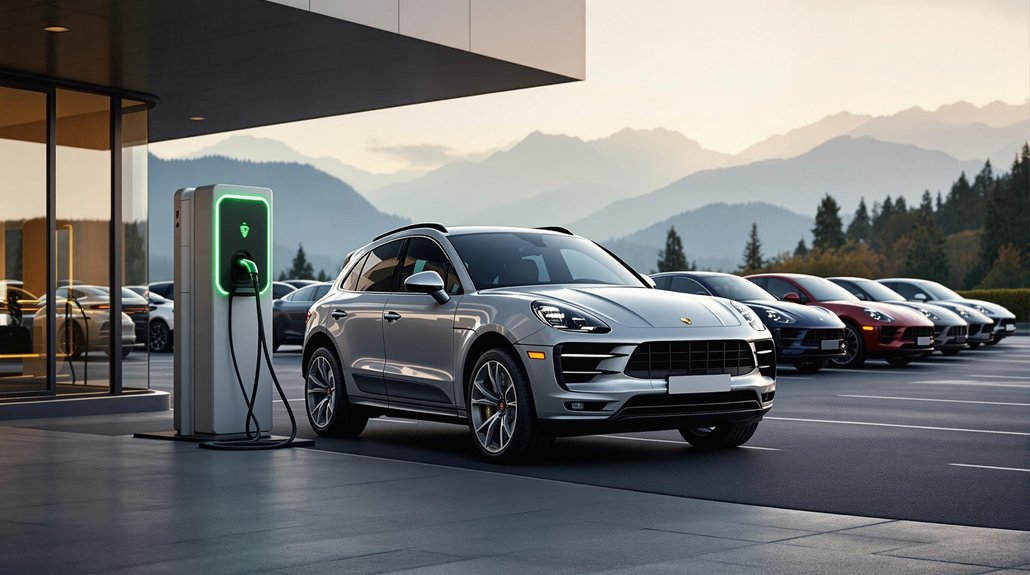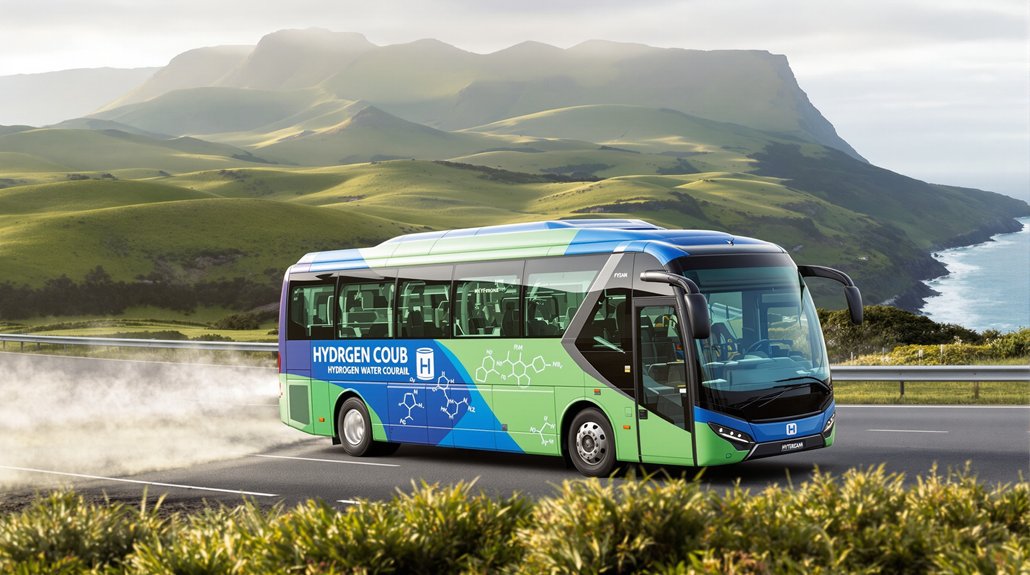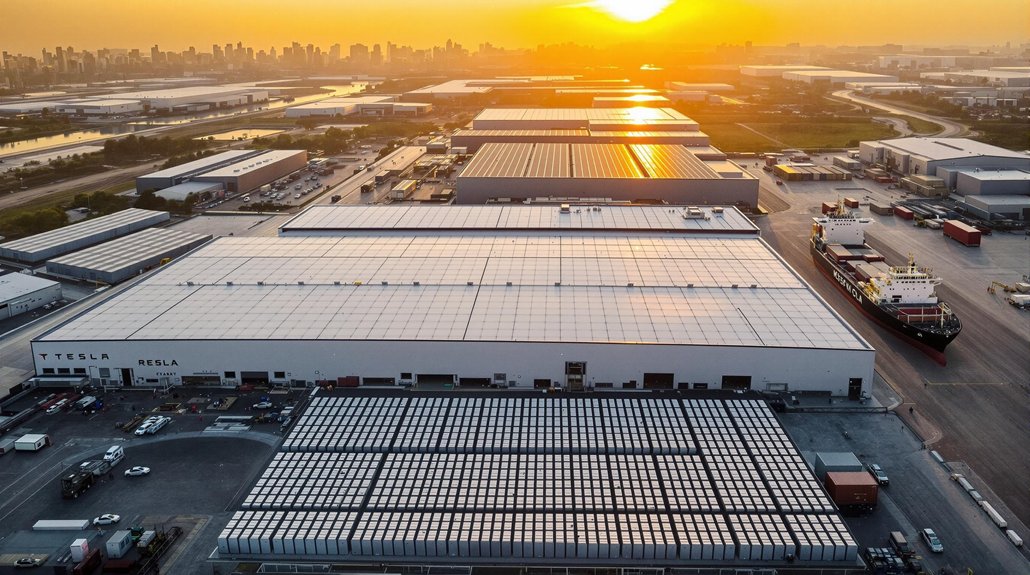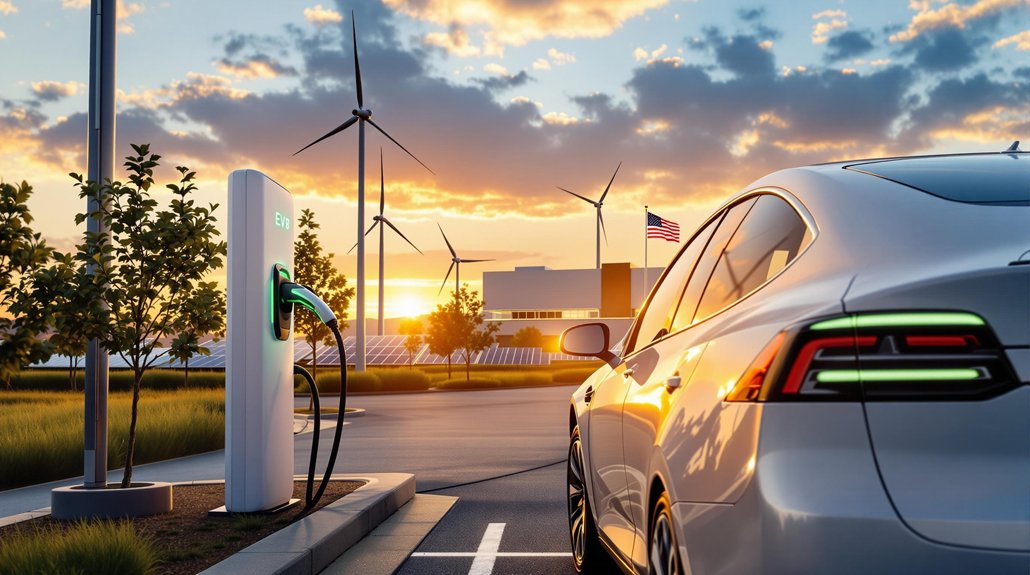The UK’s EV charging network has exploded to 73,000+ devices, growing 29% since March 2024. That’s serious momentum. London and the South-East hog 43% of chargers, while rural areas get the leftovers. The government’s throwing £450 million at the problem through its LEVI programme. Their 300,000-charger target by 2030 is ambitious, perhaps delusional. The geographical disparities reveal where the real challenges lie.
While drivers across the UK once worried about where to juice up their electric vehicles, those days are rapidly fading into the rearview mirror. The nation’s public charging network has exploded to over 73,000 devices by January 2025, up from a measly 28,460 in 2021. That’s a 29% jump just since March 2024. Not too shabby.
The charging landscape is changing fast. Really fast. With an average annual growth of 35% since 2020, Britain’s gone from EV charging wasteland to something actually resembling a functional network. Still, experts say we’ll need at least 300,000 public chargers by 2030. So yeah, plenty more work to do.
Britain’s EV network is growing like wildfire, but we’re still miles from where we need to be by 2030.
Let’s be real though – this growth isn’t exactly equal. London and the South-East are hogging 43% of all public charge points. Must be nice. Meanwhile, rural areas across England account for just 15% of the network. March 2025 data shows the network now includes 76,840 electric vehicle charging points across 38,737 charging locations nationwide. The Department’s £450 million LEVI budget aims to address this geographical imbalance through local authority partnerships. The numbers tell the story: London boasts 250.4 devices per 100,000 people, while Northern Ireland limps along with a pathetic 35.6.
The Department for Transport isn’t blind to the problem. Their LEVI programme aims to add 100,000+ charge points across England, prioritizing rural and deprived areas. About time.
When it comes to where these chargers actually exist, most are destination chargers (49.1%) or on-street (35.9%). Only 9.3% are en-route chargers – those critical ones for long journeys when your battery’s screaming for juice.
Rapid charging availability varies wildly too. Scotland leads with 29 rapid devices per 100,000 people. London? Just 15.1. Seems the capital is all about quantity, not speed. The EV sector is creating valuable job growth as part of the 13.7 million people employed in renewable energy worldwide.
The EV transformation is happening. Networks have nearly doubled in 2023 alone. But regional disparities remain a massive hurdle. Rural drivers especially are getting the short end of the stick. The race to 2030 is on – and the charging network needs to keep pace.
References
- https://www.zap-map.com/ev-stats/how-many-charging-points
- https://publications.parliament.uk/pa/cm5901/cmselect/cmpubacc/512/report.html
- https://www.gov.uk/government/statistics/electric-vehicle-public-charging-infrastructure-statistics-january-2025/electric-vehicle-public-charging-infrastructure-statistics-january-2025
- https://www.statista.com/topics/11913/electric-vehicle-charging-infrastructure-in-the-united-kingdom/
- https://www.bppulse.co.uk/going-electric/electric-vehicle-uk-facts-insights
